Log In
View Upcoming Events
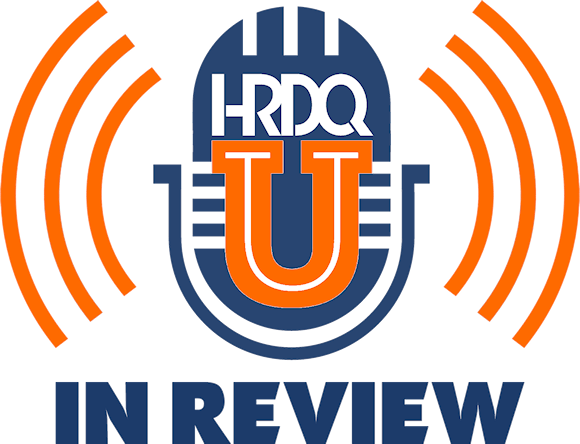

Chris Wong joins the conversation to talk about our recent webinar, A New Leader’s Playbook: Lead Change Through Tough Conversations. In this episode, we’re tackling some of the toughest questions leaders face during times of change. How do you handle another leader questioning or undermining your plans during a meeting? What’s the best way to address “change fatigue” when it starts to impact team morale? And how can leaders navigate difficult conversations around organizational changes, such as restructuring or layoffs, while being limited in what they can share?
We also explore strategies for dealing with disengaged team members or influencers who actively discourage others. Chris offers thoughtful advice on how to rebuild trust and re-engage key players, especially during high-pressure transitions. Plus, for leaders who are newer to their roles, he shares tips on how to project confidence, build credibility, and lead effectively – even when they’re still proving themselves within the organization.
This episode is packed with actionable insights and real-world strategies to help leaders navigate change with empathy, clarity, and resilience.
00:01
Welcome to this week’s episode of the HRDQ-U In Review podcast, where we bring you the latest insights and practical tools for enhancing soft skills training in your organization. This podcast is brought to you by HRDQU.com, and I’m your host, Sarah, Learning Events Manager at HRDQU. And today I have Chris Wong joining me to discuss the webinar, A New Leader’s Playbook: Lead Change Through Tough Conversations. Chris, welcome back to the podcast. How you doing?
00:29
I’m doing well, Sarah. Always a pleasure. Thanks for having me back again. So Chris, for any of our new listeners, can you tell us a little bit about who you are, what you do, specifically what inspired your journey in, you know, learning and development and how has your perspective maybe evolved over the years? I know you said during the webinar that you’ve been at this for 10 years. So I’m sure that you yourself have seen a lot of change and have grown yourself in that time.
00:55
Yeah, I, you know, I started as a licensed therapist and got burnt out and moved into learning and development. And from there, my journey to just be more effective and good at my job got me into leadership and organizational development because I was realizing that no matter how good a training is, it ends at some point and, and people need some way to continue learning, continue growing, get coaching and mentoring on the job. So I was realizing leadership.
01:23
and structures is where the right way to go is. And so I moved into that. And so I’ve just been doing that. I was doing that internally for many years. And then last year is when I started doing it on my own. So I just support new leaders, just like the webinar, but I support new leaders who have inherited such a chaotic and turbulent transition. Just how do they build credibility? How do they work with people? How do they get people on board? And how do they plan for the future and lead that change in such a chaotic environment?
01:53
Yeah, so much is changing so fast these days. And so what trends or challenges do you think L &D professionals are overlooking in the current landscape? Yeah, think I was just talking to somebody else that’s a director of leadership development at a different organization earlier today. And we were talking about how the future is not just AI. I think AI is really useful and we do need to embrace it in technology. But also the idea of democratizing
02:23
learning and development. That was like a buzzword when I was doing it internally. But just the idea of L &D departments shouldn’t be the ones holding all the information or the knowledge or the skill sets. It’s really, you know, most people, most managers, at least want to do a good job. They want to develop their people. They want to be able to work with their people. Well, they just don’t know where to start. They’re like, there’s a world of information out there. There’s a thousand million different books about leadership. Where do I start? And so
02:53
you know, Kim and I were talking about how the role of L &D and leadership development is how do we better empower leaders and managers to do the learning on their own? And how do we empower leaders to develop their folks? And so our jobs should really be more, how do we curate and give the best process or information or flow right as, as whenever they need it. But then it should be also up to that. How do we help empower them so that they take on the role of the leaders or the one teaching the material or facilitating and
03:23
we’re just helping provide the best material possible. And I think that leads me into the next question that I have for you here. What advice would you give to organizations that are trying to future proof their learning and development strategies? Well, I think investing in it. Like the guy I was talking to today is lucky his organization is about 3000 people and they keep investing in learning and development, leadership development. Like he has a big budget to be able to do things. And so it means that he’s able to go
03:53
They’re located nationally. So he’s able to visit multiple different sites and do things and bring in leaders for retreats or do these things that are really impactful. And he’s able to show that they have a result and they’re able to invest in software or external resources as needed. But a lot of all those things add up there, you they’re behind the scenes. They’re not like quick fixes to any problems. So you don’t get a quick ROI, but it really helps long-term.
04:21
you know, like the leadership levels, lower retention, there’s increased engagement at all levels because the leaders are better and there’s more stability. And so it’s really future proofing is is not just about technology, but it’s really about continuing to invest and recognizing that you’re planting seeds for the future. It’s not about a quick win, which is tough in this economy. I know that. But it’s really about how do you invest in the future and realizing you’re trying to plant a forest? You’re not trying to
04:50
a plant, a quick bush that’s going to be there next season. And Chris, we recently did this webinar just the other day this week on a new leaders playbook, lead change through tough conversations. For those that did not get to attend the webinar, can you share what our key takeaways were for the registrants at this event? Yeah, think leading change is hard, right? There’s plenty of other textbooks and strategies about that.
05:19
I think what makes it hard when you’re a new leader is you don’t have the trust and credibility to go around and just say, got to trust me on this. We can do this. So you have to build trust and you have to and you don’t even know who’s on your side or who is a good person to have on your side yet. So the first step is you got to get a lay of the land, get a better sense of who the power players are, who’s influential, whose opinion matters, who’s doesn’t. Regardless of title, it doesn’t really matter. You’re trying to figure out who’s which person’s
05:49
Words matter a lot, carry a lot of weight. Once you get that, you figure out who you need to get on your side. And then you need to start having those hard conversations with everybody that’s in those big positions of, this is what we’re trying to get to, this is what we need, this is why it’s gonna help you, try to understand their goals. So the more you can understand the people, the easier it is, the faster it is to get your initiatives moved along.
06:15
And then from there, it’s how do you communicate that is just about being open and honest and communicating in a way that’s open and transparent so people can see why this needs to happen and understand that there’s a problem with what’s going on now. It’s really about talking about there’s a problem with the way things are now. If they don’t see that there’s a problem or if they don’t see a need to change, then they’re going to see it as why do I need to do something different? Whatever we’re doing now is working.
06:42
So until they see it, until they can feel like this is not working, this is a real issue for us, they’re gonna keep doing things the way they’re doing it. And so to get them on your side is really about communicating. How do you persuade them and influence them to recognize there’s a problem with the way things are going right now? And in order to do that, you have to be open and transparent about what the problem is, whether it’s declining revenue, decreased productivity in whatever way, or whatever issues are happening, being open and honest about that because
07:11
that open, that transparency builds that credibility over the long term so they can trust that you have a good way of going forward out of this. And a common concern amongst our audience, you did address this during the webinar, but I’d love for you to touch on it again, since it was so prevalent. Can you discuss how you handle another leader who publicly questions or undermines your plans during public meetings? Yeah, so
07:38
There’s a couple of different layers. If it’s a peer leader, so let’s say it’s somebody that’s at the same level as you, then depending on how you’re facilitating the meeting, you can have set the rule ahead of time by saying, you know, if you have a concern, share it out loud and we’ll talk about it. And you can set the stage for how you want to bring up concerns in that meeting, whatever it is. But if there, but as long as you set that stage, you can follow those rules of
08:05
you know, taking in their feedback seriously, asking more questions about it, digging deeper into that. And then following up, following up separately with that person saying, Hey, I know you brought this up. It sounds like you have a concern. What’s your concern here? What’s the concern with this direction or this idea that I have proposed? And so it’s it’s partially going in with the idea, the the mindset of curiosity is, I just want to know what the concern is, I don’t
08:35
I don’t want to, you know, personally, I may think that you’re being a jerk or you’re being difficult, whatever. And you can think that feel free to think that. But when you go into that conversation, go in with the mindset of I just want to know what’s going on for you here. Is it? Is it because you don’t like the idea? Or is it you just don’t like me? Maybe you just don’t like me. So anything I say, like I can be eating salad and you’re like, look at this. Look at Chris eating a salad. He looks like such a jerk. So it doesn’t matter what I’m going to say. You’re just going to hate everything I say.
09:05
but just trying to get curious of figuring out what is going on underneath the surface. it about the issue or is it about me? If it’s a senior leader, so I know that in the webinar we had a bunch of people who were like, I have the senior leader who’s undermining me or whatever and I can’t get their buy-in, whatever. I would go, I would, before I even present the ideas to everybody else, I would go to them first. I would go to them and say, listen, I have this idea. I want to do this.
09:33
I’d love to get your feedback on this and thoughts on what do you think will work or what won’t work and being really clear about this. And the more you need their buy-in, the more you’re going to be need to have going with a collaborative mindset of what do you think about this idea? I’d love your feedback. That way I can see what works, what doesn’t work and get them to start thinking about it. And then as you’re collaborating, there might be things you missed. As long as you go in with an open mind, you’re like, Oh, I didn’t think about that. I can add that in. And then you can start collaborating. The more they contribute to it.
10:03
the more they’re going to buy into it over time because they were a part of the process. Just like everybody else, the more that you’re part of the process, the more you can buy into it. And so with the senior leader above you, it’s a little more important to go ahead of time. But that if if it if you tried your best, they still didn’t want to meet with you. go into this meeting or you go into this group and you’re still trying to talk about it. I for me, I would not I would not suggest, you know, challenging a senior leader in the meeting.
10:32
But I would go back afterwards and talk about what happened and say, sounds like you didn’t like my idea. What’s going on with this is our concern. Similar to the peer, but just having to be more collaborative and more open-ended on what the process looks like. Trying to keep that open line of communication. I think that’s all it is, is keeping an open communication, but also being willing to have a one-on-one conversation. It’s one of those.
10:59
Maybe it’s a little bit harder if you’re really distributed and it’s over Zoom and they’re busy and you’re busy and all this stuff. But I think it’s one of those things you got to prioritize because so much can be lost on email or text or Teams messages. So it’s really about how do I talk to you and see your facial expressions as much as possible. Yeah. And change, that’s really hard for a lot of us. Could you talk about the best way to address change fatigue?
11:30
I would, I would do a lot of self reflection. You know, if you came in, if you come in and you’re like, I need to make this change. And everybody’s like, listen, we went through four different changes over the past year over different systems. None of them worked, whatever is really just first examining doing some self reflection. Do I need to make this change now? Does this need to happen now? Or can it wait? Do I want to give a little bit of room to wait for this thing to happen?
11:58
Sometimes you can wait, sometimes you can’t. If you can’t, that’s gotta be part of the messaging. It’s gotta be part of the message. Like this is why it has to change right now, right? Like if there was an emergency in your house, right? Like you might’ve had a tough day at work. might, you know, the kids might be hungry and screaming. You might, you know, maybe you have a, you’ve been in middle of a conflict with your spouse. If the house catches on fire, you’re gonna leave that house. You’re not gonna say, I don’t wanna deal with that right now, right?
12:26
there’s a real emergency that then you’re to want to deal with it. So if it’s a real thing that needs to change right here, right now, or, you know, imminently, that’s got to be part of your communication is like, I get, I get this a lot of change fatigue. And, you know, this is the reason why it has to happen now. And I get that. And then part of it, and then having that, that open dialogue we were talking about, have that open dialogue about what they’re concerned about with all this change fatigue. Are they worried that
12:53
they’re gonna be left holding the bag by themselves. So they just need more resources and support. You’re gonna have to bring that in, bring in some extra resources and support, especially if you feel like that change is so important. But again, I think it goes back to self reflection. If the change is that important, if it needs to happen, then just do whatever you gotta do to make it work, whether it’s providing extra resources, extra support, extending the timeline, if that’s possible. like you start it now and you kind of let it, let,
13:21
give like support over time, but it’s really about being clear whether it’s a real emergency or not, that you need to change this. And then what about, you know, how can you communicate openly about big changes like organizational restructuring and layoffs as a senior leader that you do have to do sometimes where you’re restricted from sharing certain details? So what’s the best way to go about that? Just being open and honest about that you can’t share things.
13:51
Yeah, I think a lot of times when you try to put a positive spin on it or try to make up a reason, people can tell when it’s not genuine, even if they can’t specifically call it out in the moment that you’re lying. It just feels wrong. It feels there’s like a disconnect between what you’re saying and the mood of what you’re saying. And so just being open and honest and saying, look, there’s some big changes coming up to this organization.
14:16
because of some legal things, I can’t necessarily share that with you. So I want to share that with you when it’s possible. I can answer, I can try to answer some of your questions now to the best of my ability. I won’t be transparent to the best of my, to the most I’m allowed to, but you have to understand that there’s some things I cannot say at this moment. And that can be part of the, but that’s the first conversation, right? That’s not like we’d start, we, I say that and then we just hear crickets forever. It’s part of that ongoing dialogue because you know, if I’m the CEO and I’m
14:45
sharing this with my entire organization. The managers don’t know any more information than the employees do. The directors probably don’t know more information, but yet they’re going to get the brunt of the questions. so that is my job. If I know more information, I need to go out there and have that road show and talk to people and talk to my managers, talk to my directors, talk to the employees on an ongoing basis and just kind of assuage their not fears that like bad things will happen because it might, you can’t stop that.
15:14
Right. It’s really more about I’m here with you. I don’t want to leave you in the lurch, even though I know I can’t give you all this information. I just want to know, want you to know that I’m still here with you. And then what about if a key influencer in your organization or on your team starts disengaging or actively discourages others? How would you handle that? Yeah, I would take them aside. I would say, I would say, what’s going on here? What happened? You know, you are a really important person here.
15:45
You’re well respected by everybody. You’re well liked. And I notice you don’t like what’s the direction we’re going on. Tell me what’s happening here. Try to explore, try to see if there’s a real concern, if there’s something that you’re missing, because you might, you’re not close to the ground. You might not see all the stuff that’s happening that’s causing all this extra stress and burden. And so going down there and figuring out what’s happening. And then also you got to think about in this new world, once this change happens, what are the new behaviors that you’re willing to tolerate?
16:14
that you’re not willing to tolerate anymore. If you’re leading a change to a new future, you have to define for yourself and for the organization, what does that look like? What does the new world look like? What are we all gonna say? How are we all gonna behave? And part of that means you have to also have that conversation with people who are not behaving in the way you need them to. It’s partially after you’ve explored, after you spend enough time figuring out what’s going on is thinking through it, talking through with them like, hey, listen,
16:43
in this new world, new way we’re doing things that’s not tolerated anymore. And then from that point, it’s their choice, you know, it’s their choice, whether they want your support and guidance and coaching to get to that level, or whether they decide this is not the place for them, they don’t like the new direction they want to go. And that’s part of it, you have to be okay with that. This, not every workplace is the right fit for everybody. No matter how long they’ve been there, no matter how much knowledge they have, sometimes people just outgrow certain places and they need to go do something else and
17:13
or they go through different life stages and they need to, you know, explore new things in their life and that’s okay. So it’s not about trying to make everybody fit into this new, new future, but it’s being clear on what does this new future look like and having that conversation with them, cause maybe they just needed a talk with you one-on-one to get them on the right track, but you won’t know until you talk to them.
17:36
And I think this is a big one for people. How can you project confidence when you’re still new to an organization and you haven’t had the chance to prove yourself yet? Yeah, I was just talking to somebody yesterday about this. I’ve talked to multiple people about this, confidence. I think it means different things to different people. So for one person, it could be, don’t want to second guess my choices. Nobody else will know if I’m confident. I just will feel confident.
18:05
Other people, you know, other people talk about like they want to make sure they don’t say ums or ahs when they’re talking or they don’t want to wring their hands or they don’t want to talk too fast. They want to slow down their rate of speech. So when, when I think about projecting confidence, what I think about is when you’re new, what is the message you’re trying to get across or what, do you want to be portrayed? How do you want people to perceive you? That’s the first thing. How do you want to perceive yourself and how do you want others to perceive you?
18:33
And so do you want to slow down your speech and work on all this other stuff? And that’s fine. Then you can just want to identify that and define that. Then you can just either get a coach or you can get a buddy to help you or a mentor to just work on those verbal ticks and how you’re presenting and how you’re speaking. And then the other, but if it’s other things like internally, I want to feel like I’m making the right choice. Part of that is just figuring out.
18:59
kind of what that means for you also what the confidence is so personalized, it’s it means different things to different people. So does confidence mean that you just don’t or you’re not going to second guess yourself when you make a choice. So how are going to project that? How are you going to just ask questions and, you know, feel free to say I don’t know, right? Or I need to ask, I need to ask somebody else because I don’t know the answer to this because I’m new here. Right. But it’s it’s again,
19:27
I keep saying these words, but it’s going back to that open and transparency about what you know and what you don’t know. And that builds credibility at the end of the day. If you can say, don’t know, I’m new here, I’d love to figure that out with you. Absolutely. And lastly, Chris, where can listeners go to learn more about your work? Well, you can always follow me on LinkedIn. That’s where I’m most active. I don’t know why I blanked on that word, but that’s where I’m most active is.
19:57
on LinkedIn, Chris Wong LMHC, where you can find me my website, www.myleadershippotential.com. I also have a podcast, the art and science of difficult conversations. So you can catch us on every streaming platform on YouTube, the art and science of difficult conversations. You can always just email me, chris at myleadershippotential.com. I know that in the feedback, some of the people were saying that they wish the session was longer. And it’s true, it could have been because we could have dive deeper into all of those things.
20:27
And some of the questions we talked about today, but people want to dive deeper, feel free to email me. Let’s chat it out. I love this topic, so happy to chat about it. Great. Thanks, Chris. And if you have yet to listen to or watch the webinar, we will have that information linked below. I highly recommend that you do so, so you can check that out along with the whole collection of webinars that Chris has presented over at HRDQ as well. And with that, thank you so much, Chris, for your time today.
20:56
Thank you, Sarah. Great talking to you as always. And we hope you enjoy listening to the HRDQ-U In Review Podcast, available on all major streaming platforms. If you did enjoy today’s episode, make sure to give us a follow and leave us a five-star review. That’s how we’re able to continue to produce this weekly content for you. Thank you all for tuning in to this week’s episode of the HRDQ-U In Review podcast, brought to you by HRDQU.com.


Listen to this podcast event at no charge with your
HRDQ-U Free Access Membership
Chris Wong joins the conversation to talk about our recent webinar, A New Leader’s Playbook: Lead Change Through Tough Conversations. In this episode, we’re tackling some of the toughest questions leaders face during times of change. How do you handle another leader questioning or undermining your plans during a meeting? What’s the best way to address “change fatigue” when it starts to impact team morale? And how can leaders navigate difficult conversations around organizational changes, such as restructuring or layoffs, while being limited in what they can share?
We also explore strategies for dealing with disengaged team members or influencers who actively discourage others. Chris offers thoughtful advice on how to rebuild trust and re-engage key players, especially during high-pressure transitions. Plus, for leaders who are newer to their roles, he shares tips on how to project confidence, build credibility, and lead effectively – even when they’re still proving themselves within the organization.
This episode is packed with actionable insights and real-world strategies to help leaders navigate change with empathy, clarity, and resilience.
[ PODCAST PLAYBACK ]
You must be signed-in with your membership account to access this content.
Enjoyed this podcast? Have suggestions on how we can improve? Please take our quick survey and receive a coupon for 15% OFF any of our individual membership plans.
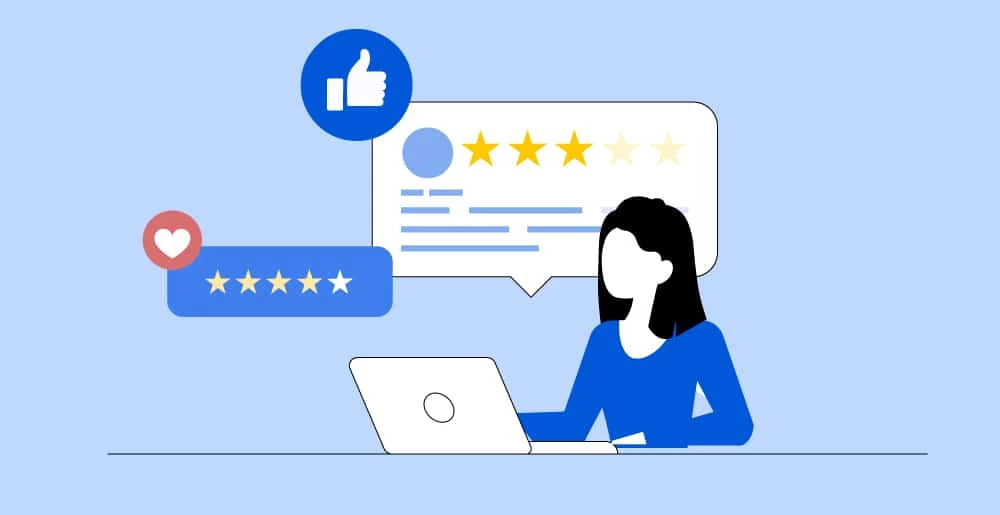
*Instant 15% coupon available upon completion of survey.
Want to learn more? Become an Individual or Corporate member to watch this and hundreds more webinars!
Learn how to successfully lead change as a new leader. Gain trust, communicate effectively, and navigate tough conversations with confidence.
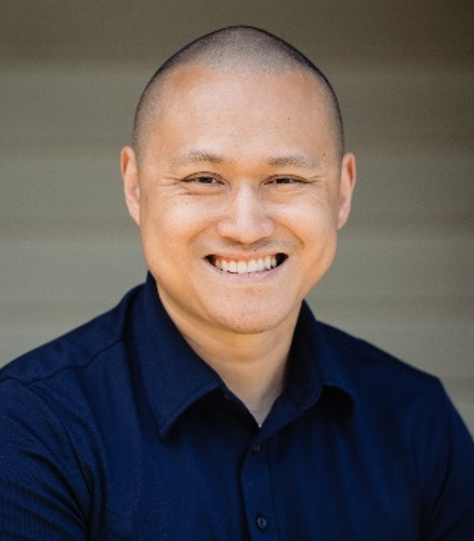
Chris Wong
Chris Wong is a certified executive coach, licensed therapist, and seasoned leadership development professional with a proven track record in the nonprofit sector. He specializes in guiding leaders through strategic prioritization, confident navigation of difficult conversations, and fostering high-performing cultures. As a facilitator and public speaker, Chris has trained hundreds of leaders and spearheaded successful organizational projects. His extensive experience spans nonprofit, health insurance, and government systems and encompasses leadership development, strategic planning, change management, and diversity, equity, and inclusion.
Currently, he partners with human service nonprofit executives to execute strategic plans, addressing challenges such as conflict resolution, culture enhancement, productivity improvement, and fostering inclusive work environments.
Website: www.myleadershippotential.com

Training Tools for Developing Great People Skills
This event is sponsored by HRDQ. For 45 years HRDQ has provided research-based, off-the-shelf soft-skills training resources for classroom, virtual, and online training. From assessments and workshops to experiential hands-on games, HRDQ helps organizations improve performance, increase job satisfaction, and more.
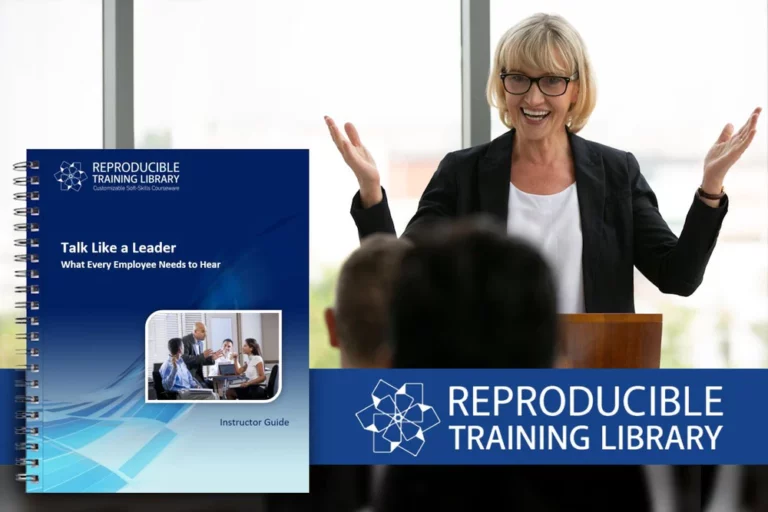
Talk Like a Leader Customizable Courseware
Explore the four essential aspects of leadership communication – vision, competence, relationships, and support – and gain the skills and confidence necessary to inspire enthusiasm, boost productivity, reduce misunderstandings, and enhance workplace relationships.
Buy at HRDQstore.com
Navigating Difficult Conversations Customizable Courseware
Master a seven-stage process for handling tricky situations to minimize backlash and foster an environment of reduced stress and better relationships. With realistic examples, participants will effectively prepare for, engage in, and conclude difficult conversations.
Buy at HRDQstore.com
“HRDQ-U is a fantastic online learning/training resource. I first learned about them through an email from my CDOC state email – clicked the link and loved the sessions!”
Benjamin B.
State Teacher 1
CD
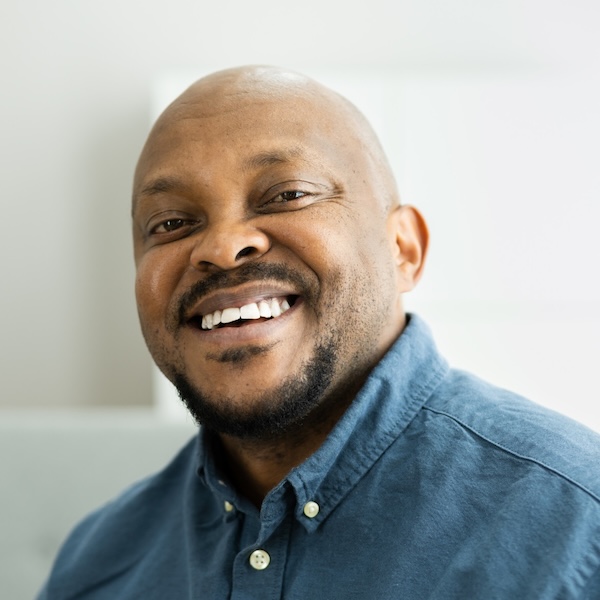
“Chris was great, and his info was very relevant!!”
Bill S.
Director
Results for Change

“Our speaker and facilitator worked well together to keep the webinar on schedule and in the scope of the discussion. Great work!”
Crystal M.
Supervisor
USS
The HRDQ-U In Review Podcast, brought to you by HRDQU.com, brings you the latest insights and practical tools for enhancing soft-skills training in your organization. As a learning community for trainers, coaches, consultants, managers, and anyone passionate about performance improvement, we interview subject matter experts and thought leaders from recent webinars they presented with us to take a deeper dive into the content they shared and answer all your questions. Join us as we explore new ideas and industry trends, share success stories, and discuss challenges faced by professionals.
The HRDQ-U In Review Podcast is intended for HR and training professionals, organizational development practitioners, and anyone interested in improving workplace performance and productivity.
New episodes of HRDQ-U In Review are released every week.
The length of the episodes varies, but they typically range from 15-30 minutes.
The podcast covers a wide range of topics related to HR and organizational development, including leadership development, team building, communication skills, conflict resolution, employee engagement, and more.
No, HRDQ-U In Review is completely free to listen to.
You can listen to any available HRDQ-U In Review Podcast right on our website at HRDQU.com via our embedded Spotify player on the related webinar page. In addition to our self-hosted option, you can find the HRDQ-U In Review Podcast on many of the popular streaming services, which are listed above.